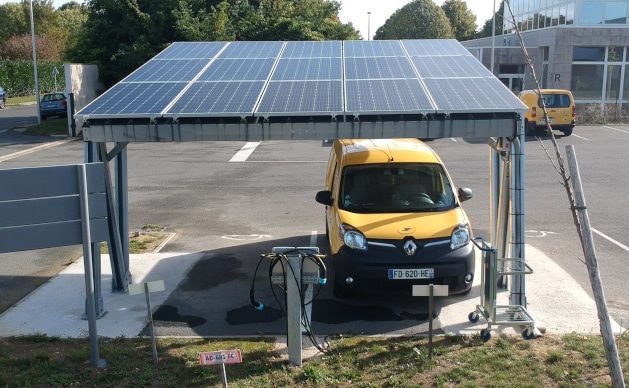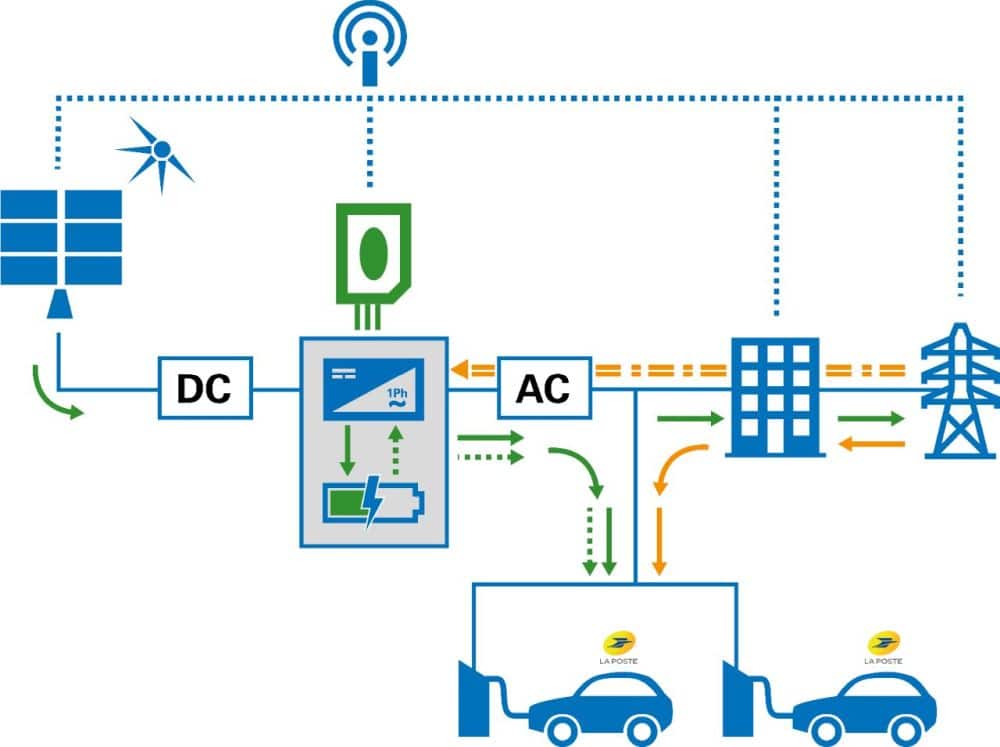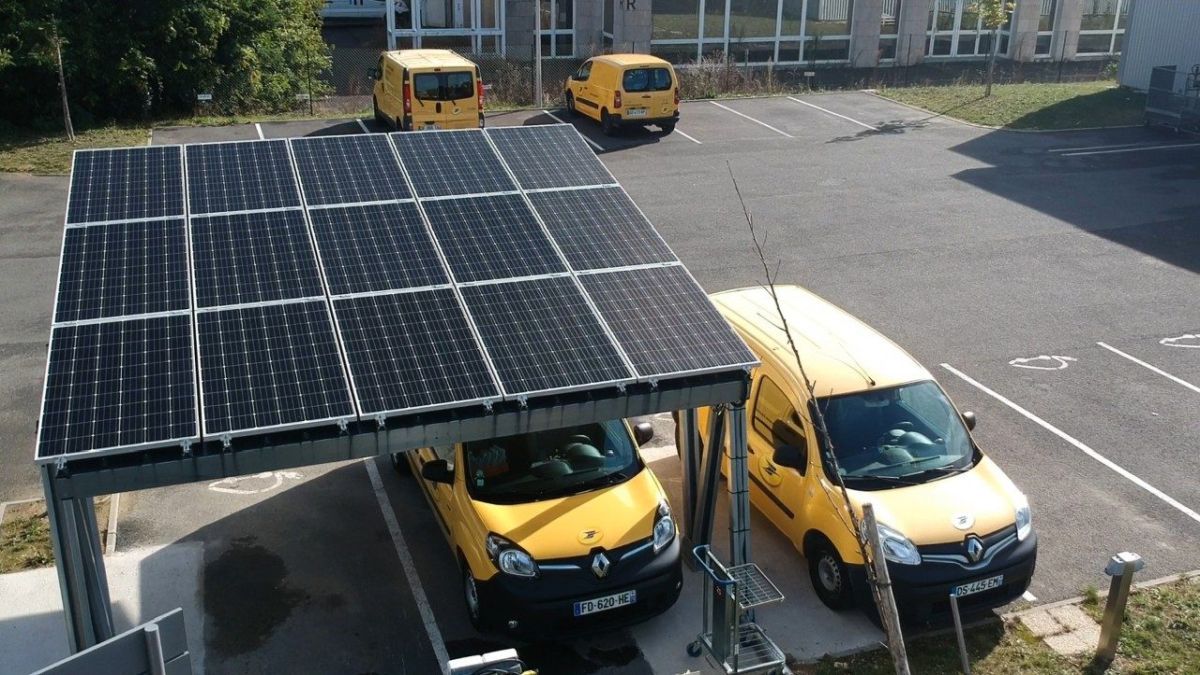La Poste, the French postal services company, is set to drastically reduce the carbon footprint of its delivery fleet by using solar energy to recharge its electric vehicle fleet.
The French company is experimenting with the use of solar photovoltaic canopies and an energy storage system to power the electric vehicles that transport the mail from the La Poste site in Magny-les-Hameaux in the Yvelines department to homes throughout the region. The results are already showing how the site’s self-generated energy reduces dependence on the French electricity grid.

The pilot project, which involves Eaton company active in energy management, together with Equans, a subsidiary of Engie and a global leader in multi-technical services, is based on a microgrid. The energy stored by the photovoltaic panels is stored in an energy storage system and used when needed, mainly to charge vehicles, but also to power the site building when energy prices are high or at peak times of the question on the national network.
Solar charging: this is how it works
During the day, while the delivery vehicles are off the road, the photovoltaic panels store energy from the sun. Energy builds up in the system and is then ready to charge the vehicles when they return to the site and are parked for the night. If necessary, some of the self-generated energy can be used for the site building and also helps to reduce the load on the French electricity grid.
Digitization is the key to effective management of renewable energy. The La Poste pilot project is based on an intelligent algorithm that manages the energy flows and controls the microgrid without the need for human intervention. Drivers simply park delivery vehicles to be recharged overnight, and EVs are ready to go the next morning with a fully charged battery.

According to the companies involved in this project, the results are impressive. Charging for delivery vehicles was integrated into the site, via the solar canopies and the building, without increasing the consumption of electricity from external sources to where they have been installed. Self-produced energy provides up to 80% of the electricity needed to power delivery vehicles during the summer months, which is when solar canopies are most productive.
This demonstration project is a useful model for other companies that have the same needs and are not located in areas where sunlight is constant for many hours a day.
Published figures say that if La Poste’s entire fleet of 7,000 electric cars benefited from the same approach to charging electric vehicles, it would represent 5,593,000 kWh of photovoltaic renewable electricity produced annually for 16,954,000 km traveled using only solar energy.
This would avoid the emission of the 112.98 tons of carbon dioxide that would result if the same number of electric vehicles were powered exclusively by the French electricity grid.
The companies involved in the project do not mention the costs incurred for the entire installation, but it seems clear that the long-term benefits (electricity savings and less CO2 in the air) are certainly to be taken into consideration.
















Leave a Reply
View Comments